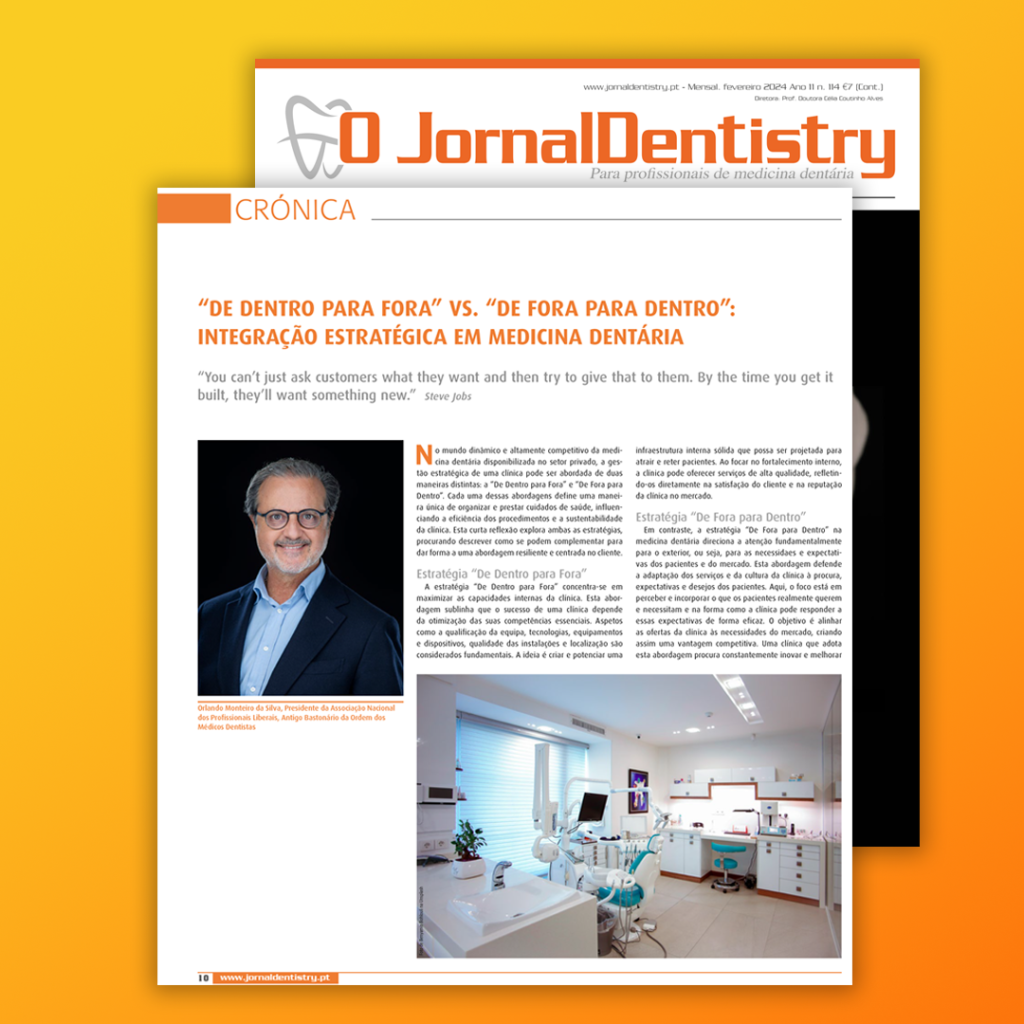In the dynamic and highly competitive world of dentistry available in the private sector, the strategic management of a clinic can be approached in two different ways: “From the Inside Out” and “From the Outside In”.
Each of these approaches defines a unique way of organizing and delivering healthcare, influencing the efficiency of procedures and the sustainability of the clinic. This short reflection explores
both strategies, seeking to describe how they can complement each other to shape a resilient and customer-centric approach

Inside-Out Strategy
The Inside Out strategy focuses on maximizing the clinic’s internal capabilities. This approach underlines that the success of a clinic depends on optimizing its core competencies.
Aspects such as the qualification of the team, technologies, equipment and devices, quality of facilities and location are considered fundamental.
The idea is to create and leverage a solid internal infrastructure that can be designed to attract and retain patients. By focusing on internal strengthening, the clinic can offer high-quality services, reflecting them directly on customer satisfaction and the clinic’s reputation in the market.
Outside-in Strategy
In contrast, the Outside-In strategy in dentistry directs attention fundamentally outwards, i.e., to the needs and expectations of patients and the market.
This approach advocates adapting the clinic’s services and culture to patients’ demands, expectations, and desires. Here, the focus is on understanding and embodying what patients really want and need and how the clinic can respond to those expectations effectively.
The goal is to align the clinic’s offerings with the needs of the market, thereby creating a competitive advantage. A clinic that adopts this approach is constantly looking to innovate and improve its services, relying mainly on feedback and evolving patient preferences.
You can read the full article, in Portuguese or English, in the Portuguese monthly edition of Dentistry magazine:



 Posted by Orlando Monteiro da Silva
Posted by Orlando Monteiro da Silva 